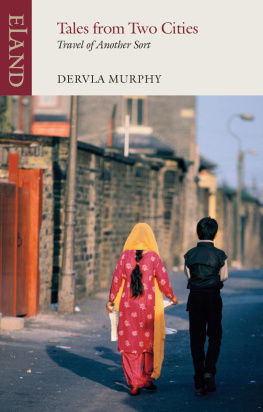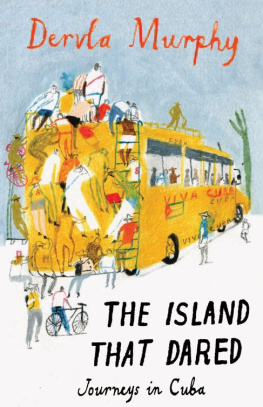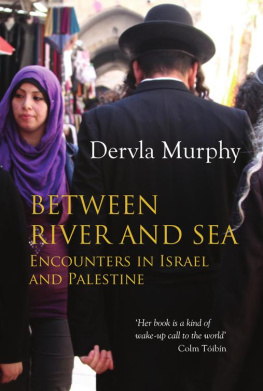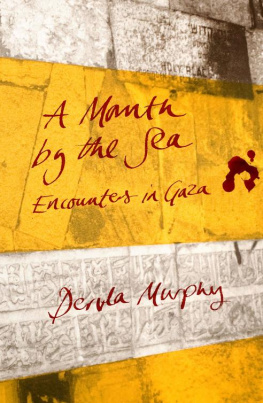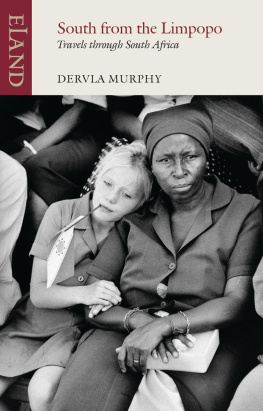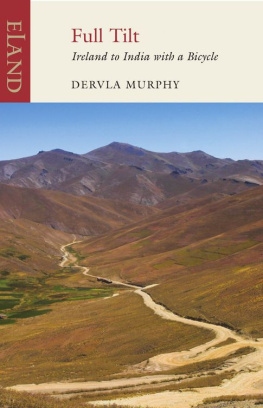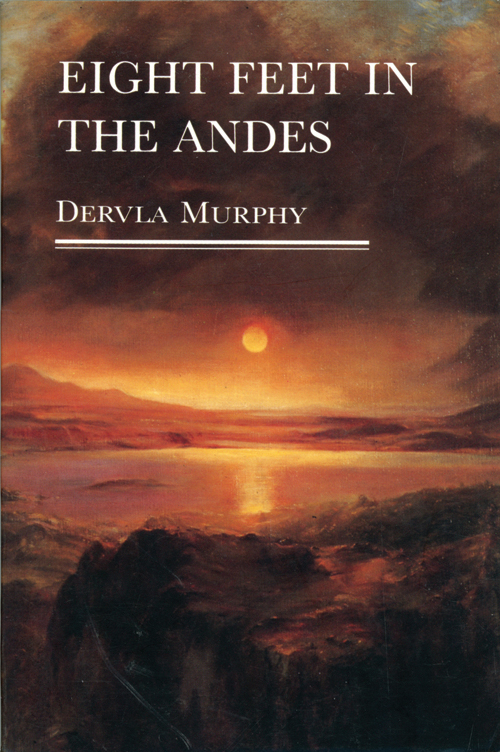First published in 1986 by
The Overlook Press
Lewis Hollow Road
Woodstock, New York 12498
Copyright 1983 by Dervla Murphy
All Rights Reserved. No part of this publication may be reproduced or transmitted in any form or by any means, electronic or mechanical including photocopy, recording, or any information storage and retrieval system now known or to be invented without permission in writing from the publisher except by a reviewer who wishes to quote brief passages in connection with a review written for inclusion in a magazine, newspaper or broadcast.
ISBN 978-1-46830-531-9
We are grateful to: H. E. the then British Ambassador to Lima and Mrs Harding for advice and hospitality.
The staff of the British Embassy in Lima, who magnanimously solved a multitude of problems for two non-British travellers.
Amelia and George Calderbank, whose mule-buying help was invaluable and whose hospitality in Cajamarca remains unforgettable.
Carolyn and John Walton, who gave us a Happy Christmas at the end of our trek and whose understanding hospitality acted as a bridge back to normal life.
Geraldine and Ken Brown, of the Potato Research Centre, Lima, who smoothed many paths for us and introduced us to a fascinating cross-section of Lima society.
Dr John Hemming, Secretary of the Royal Geographical Society, whose advice, encouragement and enthusiasm fortified us before our journey and whose book, The Conquest of the Incas, provided us with inspiration, instruction and entertainment between Cajamarca and Cuzco.
The staffs of the Library and Map Room of the R.G.S., whose cooperation was, as always, generous and whose fault it was not that we got lost so often.
Jaqueline Clark, who ruthlessly deleted a load of rubbish from the first draft.
Hallam Murray, who devoted much time and thought to helping us select suitable illustrations from among his superb collection of Andean photographs.
And last (but from the readers point of view most important) Diana Murray, who expended as much mental effort on this book as the author did, and to better effect. Without her editing, Eight Feet in the Andes would never have been fit for publication.
| |
|---|
| aguarras | turpentine |
| aguardiente | home-distilled spirit |
| amigo | friend |
| antorcha | torch |
| aukis | mountain-spirits (Quechuan) |
| ayllu | Andean tribal community organised on co-op basis |
| bano | bathroom |
| barriadas | shanty town |
| bonito | beautiful |
| burro | donkey |
| Camino Real | royal road |
| campesino | Andean peasant |
| carretera | motor-road |
| carpa | tent |
| casa | house |
| cerdo | piglet |
| cerveza | beer |
| chicha | home-brewed maize beer |
| coca | plant from which cocaine is derived |
| comisari | police station |
| conquistadores | Spanish conquerors of Latin America |
| curacas | Peruvian Indian tribal chief (Quechuan) |
| cuy | guinea-pig (Quechuan) |
| denuncia | accusation |
| desayuno | breakfast |
| encomendero | Spanish settler in Peru entitled to the produce of a given area of land though the Indians continued to own it |
| fideog | tin whistle (Gaelic) |
| flaco | lean or thin or meagre |
| gringo | white foreigner in Latin America |
| hacienda | country estate |
| hija | daughter |
| hombre | man |
| Inti | the Inca sun-god (Quechuan) |
| lomo saltado | dish of chopped meat, sauce and mixed vegetables |
| malo | lad |
| mercado | market |
| mestizo | mixed Indian and Spanish blood |
| mita | labour in the public service required under the Incas from each village as a form of tax (Quechuan) |
| mitayos | men who performed this labour (Quechuan) |
| montana | mountain |
| mula | female mule |
| mulato | mixed negro and white blood |
| nino | child |
| Ole! | hello |
| paja | straw |
| palo | stick |
| pan | bread |
| peligroso | dangerous |
| pisco | grape brandy (also used to describe various home-distilled spirits) |
| plata | money |
| posada | inn |
| pueblo | small town |
| puna | grassland above approximately 13,000 feet |
| redura | short cut |
| selva | jungle |
| sole | Peruvian unit of currency (at the time of our journey 100 soles equalled approximately 28 pence sterling) |
| tambo | Inca lodging and store house for travellers |
This book has to be for the rest of the team
Rachel and Juana
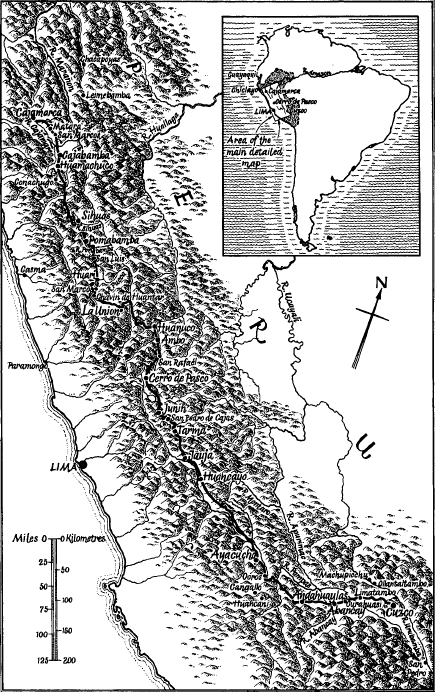
The Murphys mule-route
When we walked across the border bridge from Ecuador into Peru my daughter Rachel was aged nine years and eight months. For three years, since our return from trekking with a pony through Baltistan, she had been attending the primary school at our little home town of Lismore while I wrote a book about Northern Ireland. She was due soon to start her boarding-school career, which would preclude long journeys, and post-boarding-school she would naturally want to travel with her contemporaries, so I regarded this Andean frolic as our last major journey together. We planned to buy a riding-mule in Cajamarca, one of the main towns of northern Peru. Then I would walk while Rachel rode the 1300 miles (or so) from Cajamarca to Cuzco. We were not intent on following exactly the conquistadores route as described by Prescott the nineteenth-century American historian in his History of the Conquest of Peru. But inevitably, because there are so few routes through the Andes, we would be covering much the same ground at much the same season. Francisco Pizarro and his men left Cajamarca on 11 August 1533 and conquered the Inca capital on 15 November.
Cajamarca:
four plus four makes eight
Cajamarca. 3 September
This morning Rachel and I took a collectivo (communal taxi) from the coastal city of Chiclayo to Cajamarca: a five-hour journey. Nobody had bothered to heal our taxis wounds after various misadventures (or was it just one major smash?) and it looked like something off a scrap-iron dump. If there are any rules of the road here, the brawny, dark-skinned mulatto driver hasnt yet heard of them. He chatted cheerfully to the couple in front, roaring with laughter at his own jokes and not noticing when the seora went white with terror. A restless five-year-old shared the back with us. His favourite game was pulling the drivers hair as we were about to overtake a truck on a blind corner, or knocking his cap over his eyes as we negotiated hairpin bends with yawning abysses on one side. I grew not to love him.


